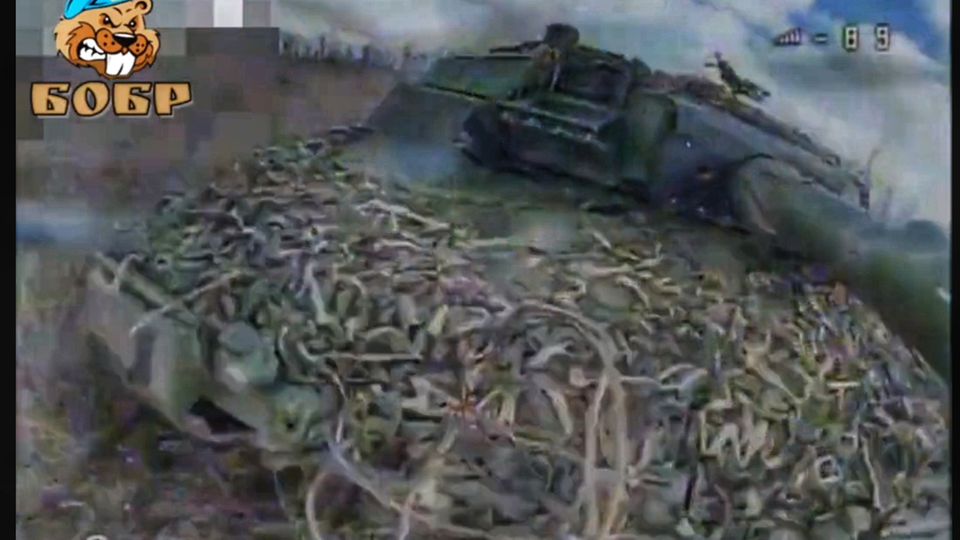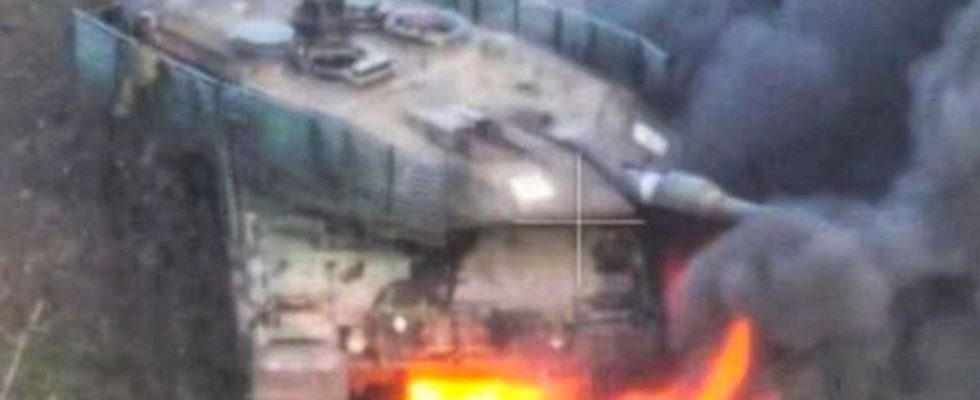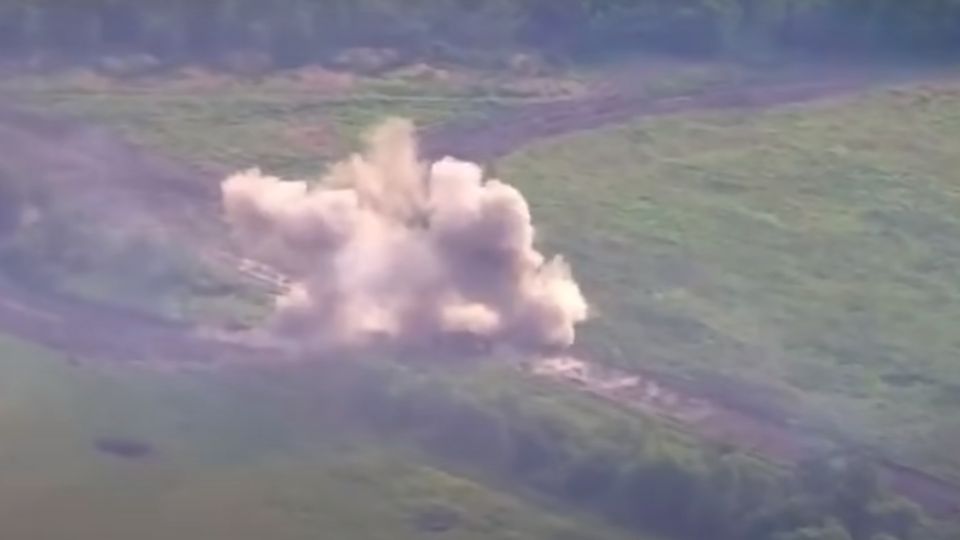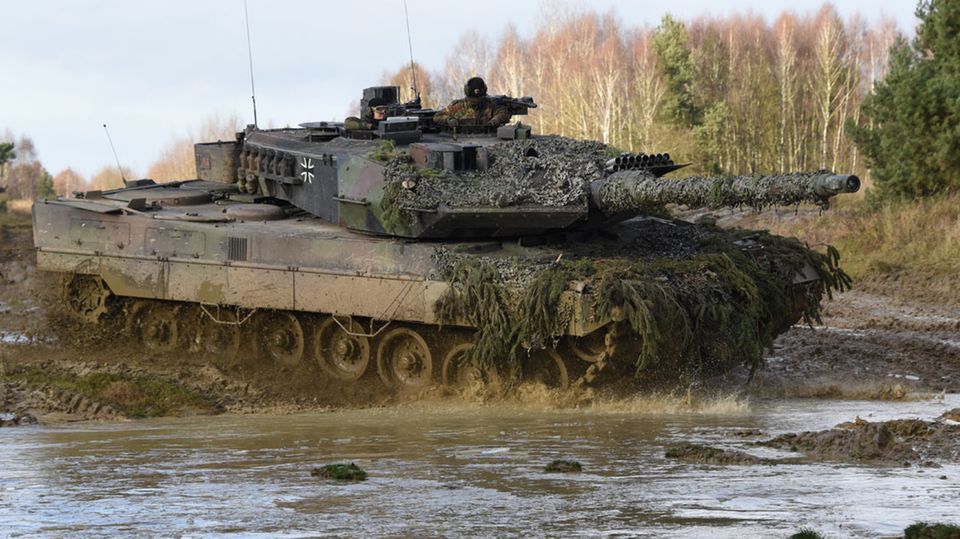War in Ukraine
Battle tank versus drone: An unequal battle that even the Leopard cannot win
The crew was able to save themselves, but the tank burned out.
The Russian drones are now so dangerous and their pilots are so skilled that they can crack German tanks. Previously they were mostly just damaged.
German tanks to the front – with great expectations were the heavy western tanks Battle tanks sent to war. In particular the Leopard 2 – the myth of the former German tank weapon and the art of engineering still surrounds it. However, the first operations at the beginning of the Ukrainian summer offensive showed that these hopes were somewhat lofty. The Leopard 2s suffered from the conditions of war just as much as the T-models. Specifically, the tanks remained in the Russian mine gardens and were shot down by artillery, far from reaching the Russian lines.
Expectations too high
It was not surprising that the Western tanks could also be discovered by drones as they approached and then attacked by artillery. However, the size and density of the Russian minefields certainly surprised the Ukrainians and their supporters. The tanks remained stranded and were unable to break through into the Russian positions. But there was a ray of hope: initially the tanks were only damaged. That was no surprise, the fragments of normal artillery ammunition cannot penetrate the main armor. When it came to mines, the Russians mostly used old, simple mines that worked with a pressure detonator. They only explode when the chain passes over them. If such a mine blows up, the track of a battle tank will be destroyed and the undercarriage will be damaged, but it will not detonate. The drones used by the Russians in June could only damage a tank. The bright spot: the crew was able to leave the Leopard without any major injuries and, with a bit of luck, the tank could be recovered.
Not within range of armor-piercing weapons
But one thing was overlooked: the Leopards couldn’t get close enough to the Russian positions to be fought with anti-aircraft missiles or tank cannons. An indication of how this could turn out was shown by the first loss of a British-built Challenger 2 tank. The heavy battle tank hit a mine shortly before Werbowe. As expected, the crew was able to disembark. The stricken vessel was later attacked by the Russians with a guided anti-tank missile, a Kornet-type ATGM. The Kornet’s warhead easily penetrated the armor. The ammunition exploded inside the tank. Although the turret did not fly into the air as spectacularly as on the T-72, it was lifted by the pressure and pushed out of the guide. This explosion would have meant certain death for the crew if they had been inside.

Shortly before the drone hit.
Off for the tanks
In the last three weeks, Kiev’s troops have lost a number of Leopard 2 tanks. And this time the hits seemed stronger than in June. The Russians have apparently stepped up their game, particularly when it comes to drones. The new drones are capable of penetrating armor and destroying the Leopard. Published Russian videos show why modern tanks have no chance against them. The drone pilots are so experienced that they can precisely select the angle of approach and impact point. A video shows the drone impacting the bottom of the turret next to the main weapon – one of the Leopard 2’s weak points. The Russians know the tank’s weak points from the loot. In addition, it is well known that the top and rear of the tank are poorly armored. The Leopard 2 can also be attacked from above by quadcopters if they drop the right grenades. The Ukrainian soldiers are therefore trying to protect the weak points with welded mesh cages.
T-72 is said to have shot down Leopard
Recently the Russians managed another spectacular kill. Here the Leopard 2 is said to have fallen victim to a simple T-72. The incident took place on the road from Ocheretyne to the embattled Avdiivka. The Leopard and an accompanying armored personnel carrier fought the Russians who had established themselves there on the parallel railway track. Then the Leopard 2 is said to have been shot at by the T-72. But not with an armor-piercing bullet, because the T-72 had no line of sight to the Leopard – that is the prerequisite for such a shot. Instead, the Russians used fragmentation munitions. It exploded near the rear of the tank. Shrapnel is said to have penetrated the thin armor and set the engine on fire. The crew was able to save themselves, but the Leopard burned out. The PR success – T-72 defeats Leopard 2 – is likely to be important for the Russian side.
The incident was filmed by a drone, but it does not provide evidence of the T-72 firing. It is also possible that the Leopard 2 was attacked by an anti-tank missile or an RPG – Panzerfaust. In any case it was destroyed. Again the level of protection of the tank was revealed.
The end of the offensive
The appearance of the leopards at Avdiivka also marks the end of the Ukrainian offensive. The tanks were withdrawn from the Zaporizhia front to protect access to the besieged city. From an offensive operation to a defensive one. This is also a sign of how strong the pressure the Russians are exerting there is.




